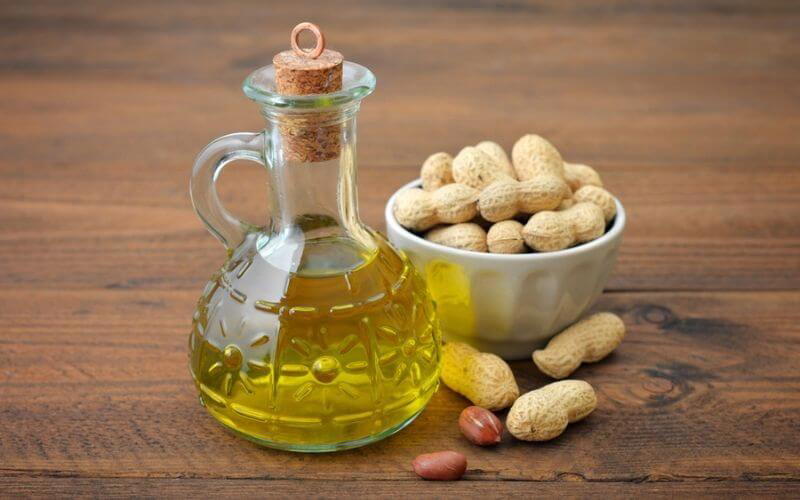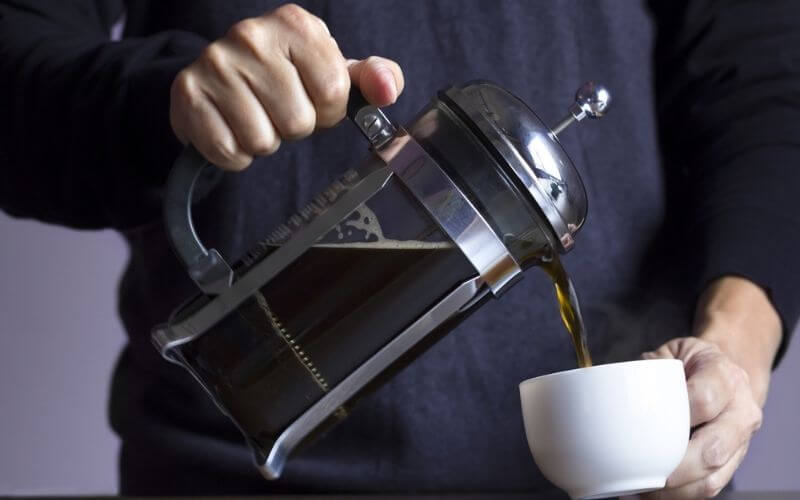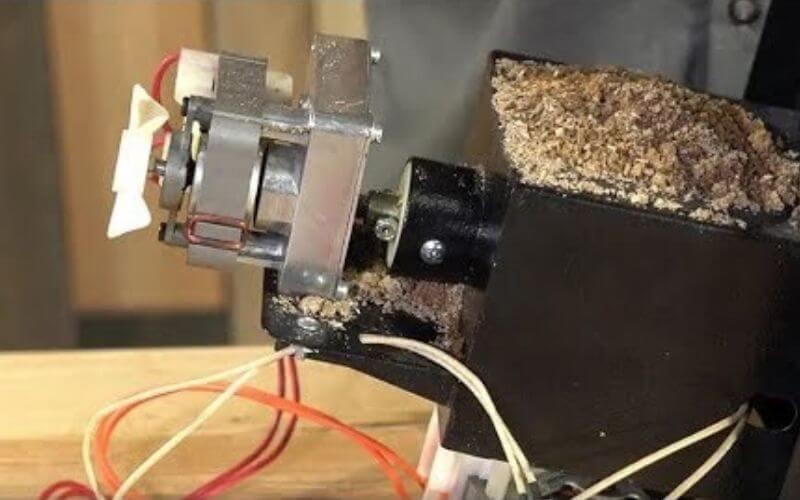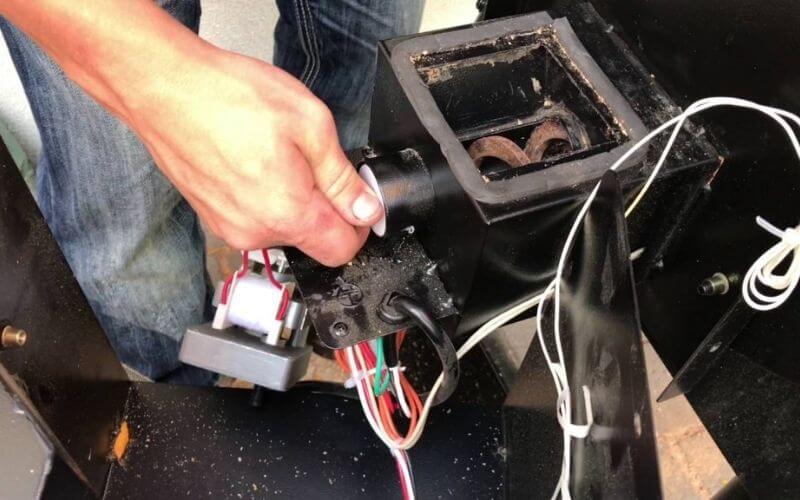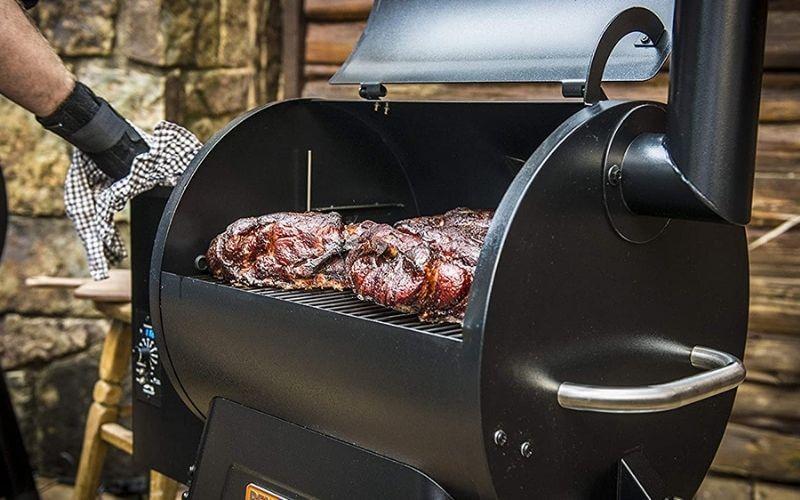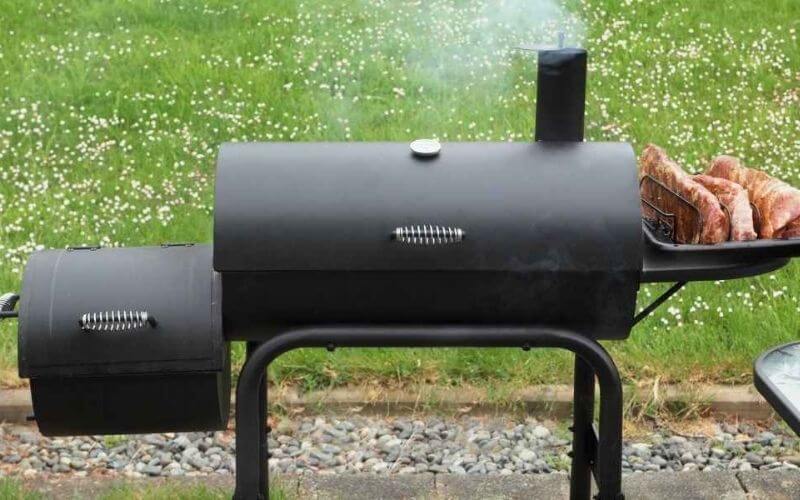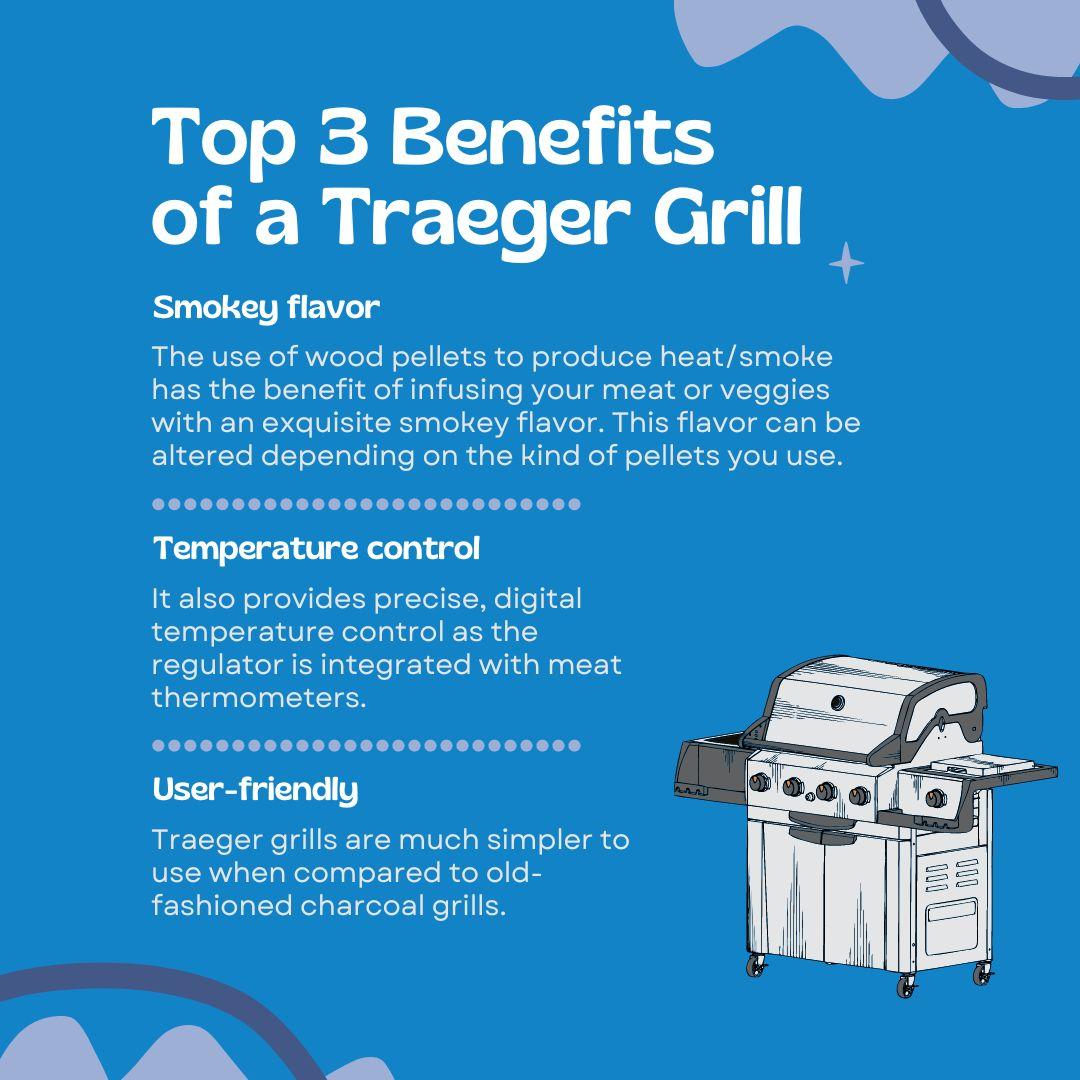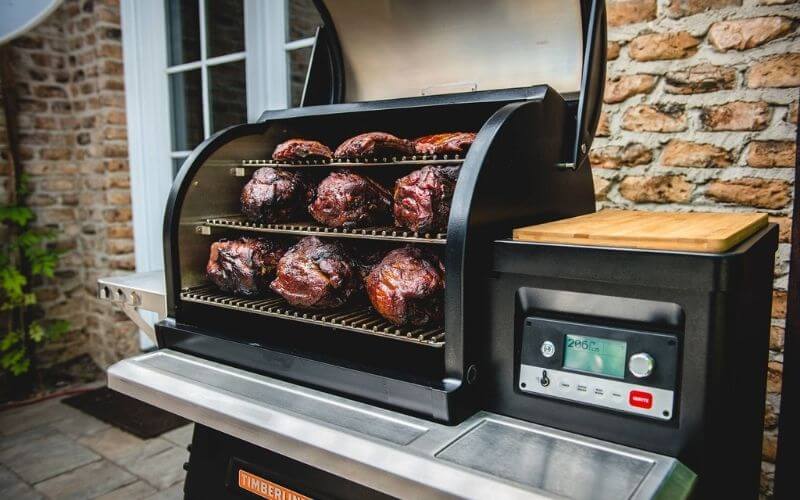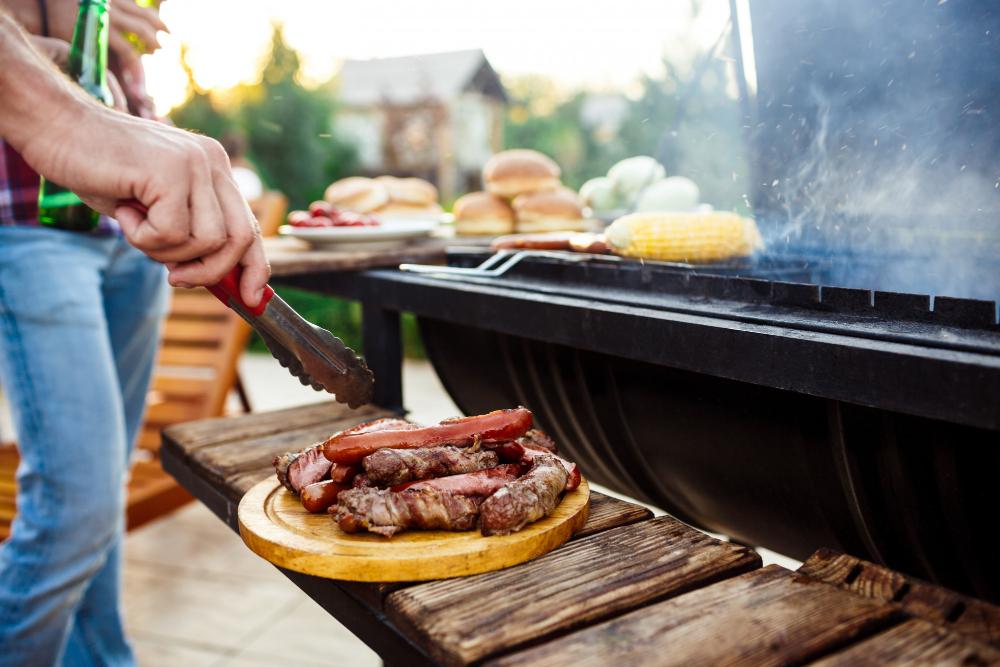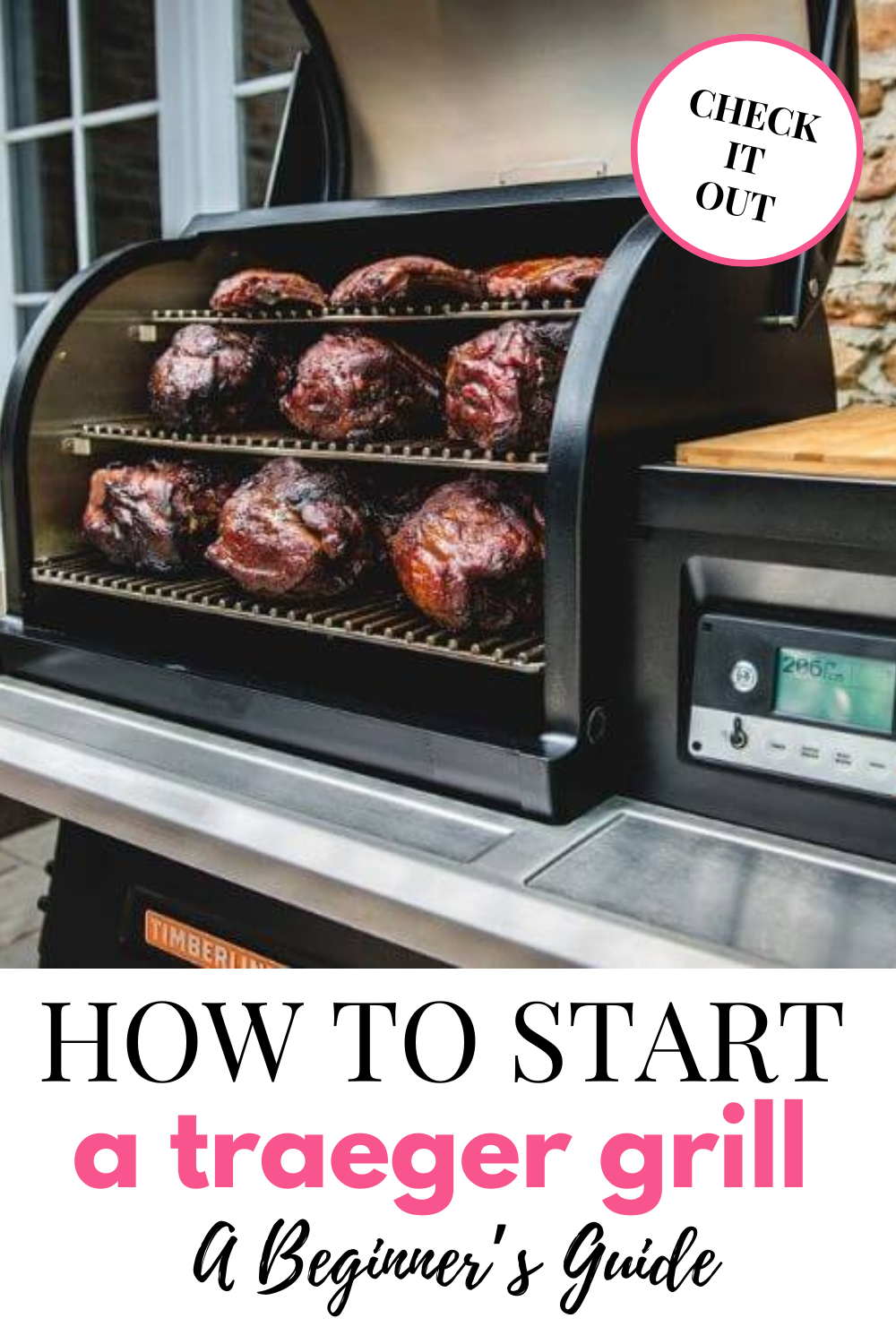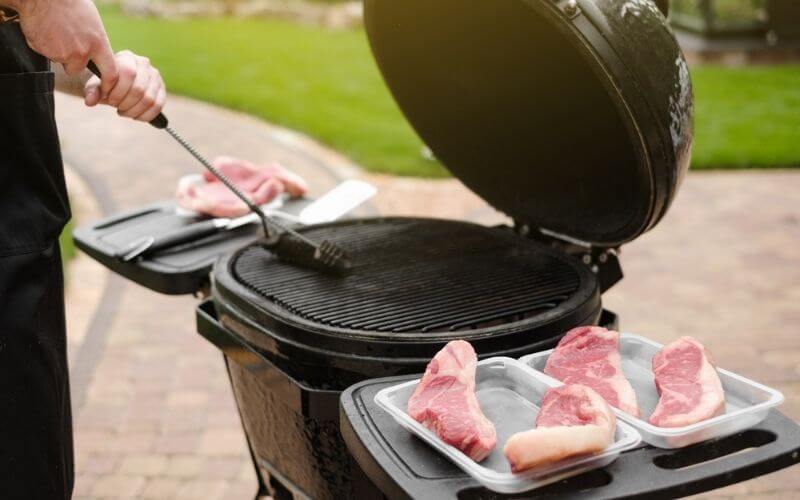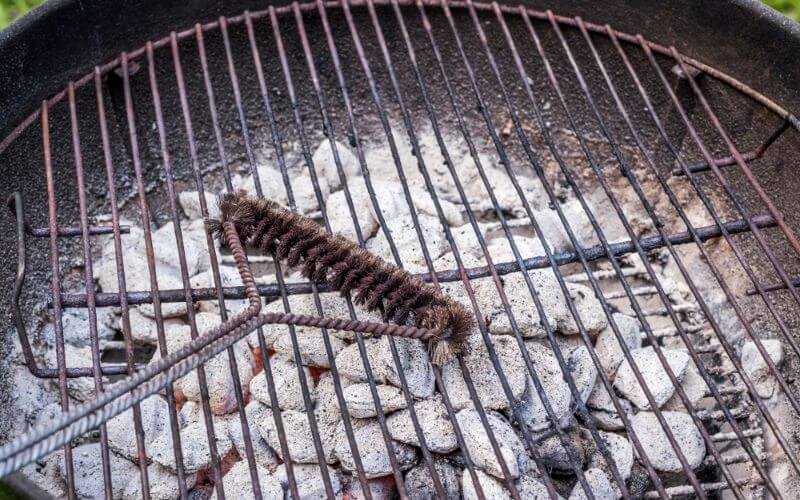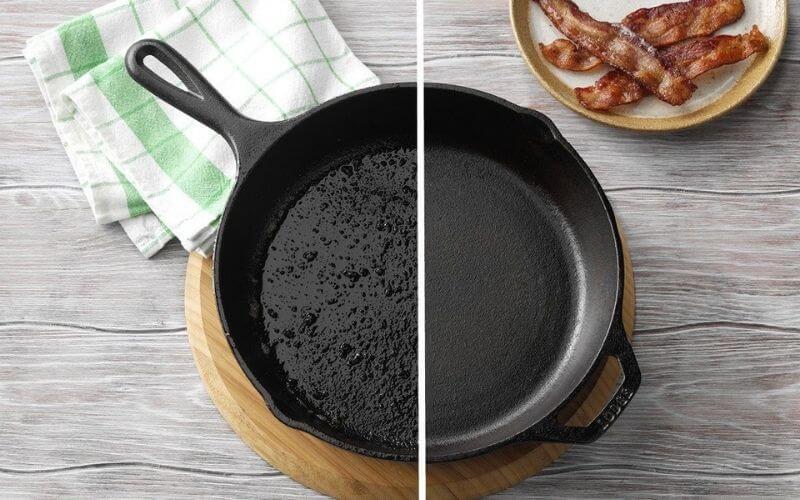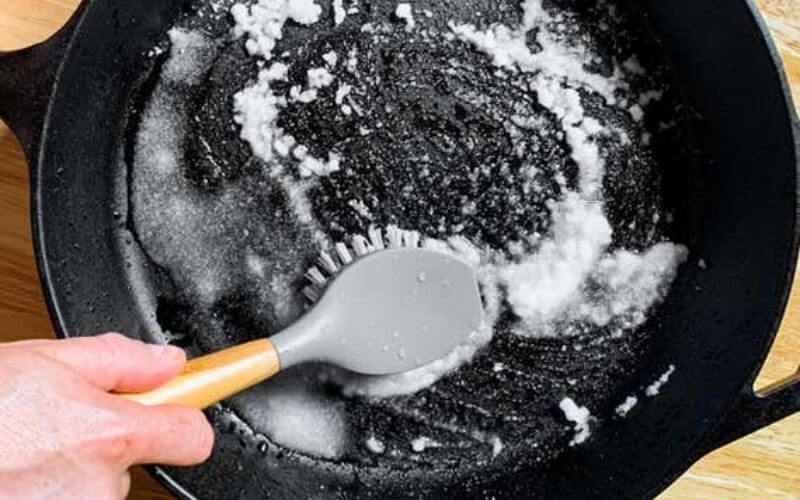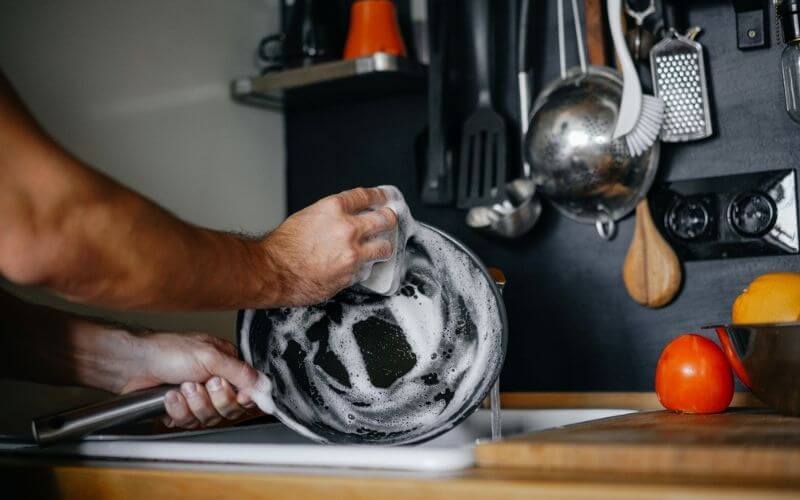Deep frying.
We love eating deep-fried goodies, but deep frying at home is nothing short of terrifying. Especially if you are a new cook.
Sometimes you have to deal with unexpected hot oil spills and splatters. Sometimes your oil gets too hot and starts to burn.
Peanut oil is hailed as one of the best oils for deep frying due to its high smoke point. It is also one of the few oils that smell and taste great, which makes your cooking taste even better. But not everyone has access to peanut oil.
Maybe your local grocery store is out of peanut oil. Maybe you’re just allergic to peanuts. Either way, you need a peanut oil substitute. That’s why this article sums up all the possible cooking oil replacement options you can ever hope for.
These replacements are great for deep frying, sautéing, making confits, and basically every other culinary use for cooking oil. With all that being said, let’s help you find a great substitute for peanut oil.
A Quick Rundown on Peanut Oil
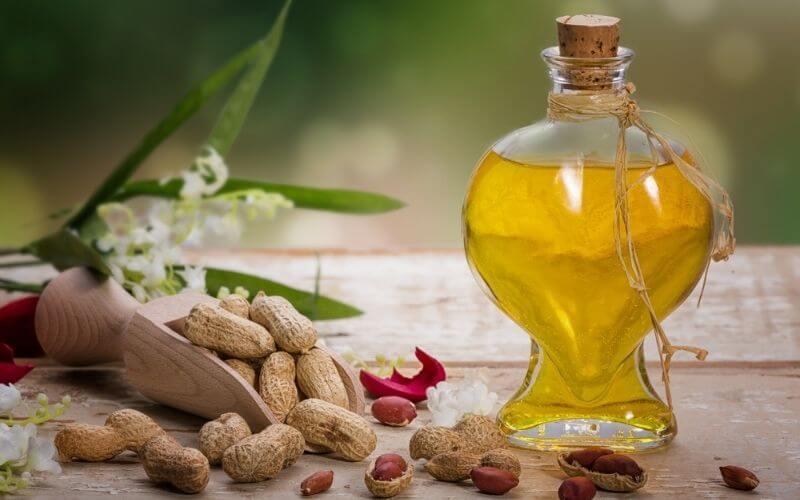
Peanut oil is also known as groundnut oil. It is a light yellow, sweet-smelling oil with a slightly nutty taste.
It is made from pressing the seeds of the peanut plant to extract the oil. Peanut oil is very popular among Chinese and other Asian cuisines.
As mentioned before, it has a high smoke point of 225C (437F). This makes it ideal for deep frying, as the oil won’t burn. It is also commonly used for sautéing and stir-frying. Peanut oil is also special because it doesn’t retain the flavor of the food cooked in it, so it is great for reusing.
This kind of oil is rich in Vitamin A and E, as well as monounsaturated fats. It also has lots of antioxidants and ‘good’ fats that are great for your skin, hair, and nails.
There are four main variants of this oil:
Cold-Pressed Peanut Oil:
This kind of oil involves using crushing peanuts to produce the oil. The process uses very little heat, so the oil retains a lot of the signature nutty flavor.
It also has most of its vitamins and nutrients intact. Is this peanut oil healthy? More so than many other oils.
Refined Peanut Oil:
Refined peanut oil is bleached and deodorized, a process that removes the allergenic parts of the oil. This makes it a safe option for people with peanut allergies. It is also commonly used for deep frying things like fries and fried chicken in restaurants.
Roasted or Gourmet Peanut Oil:
With a rich deep color, this kind of oil is made from roasting and isn’t refined. This gives it a more intense and complex flavor. As a result, it is used in stir-fries and confits to kind of infuse the peanutty flavor into foods.
Peanut Oil Blends:
Since peanut oil can be rather pricey on its own, some manufacturers mix it with cheaper oils like safflower or soybean. This kind of peanut oil isn’t as good as cold-pressed or roasted peanut oil as far as taste and quality go, but it is a good option for deep-frying in bulk.
10 Best Substitutes for Peanut Oil
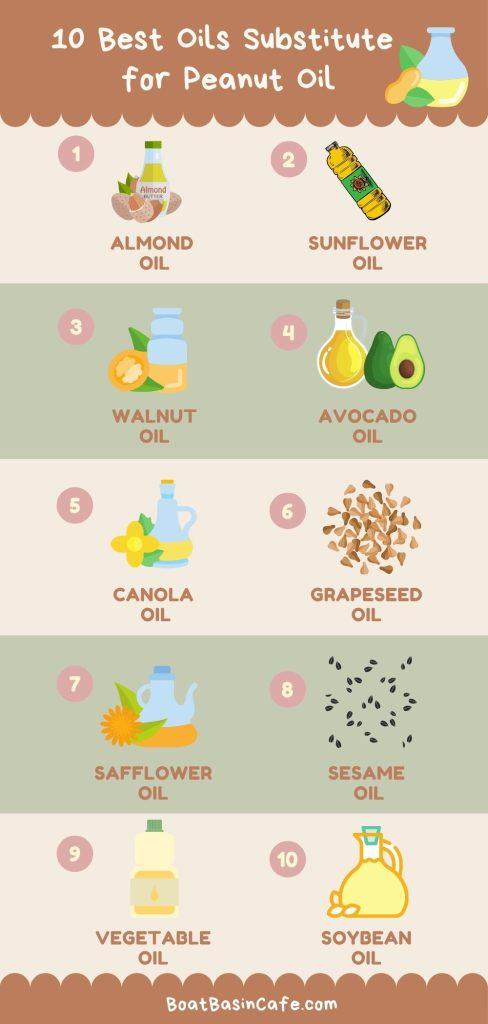
In this section, you will find the best peanut oil substitutes, what they are best used for, and the products I suggest using for ideal results. So, let’s find out which peanut oil substitute you need in your pantry!
01. Almond Oil:
[amazon box=”B0199B2BXO”]
Want something very rich in antioxidants, vitamins, and healthy fats? Almond oil is the ingredient of your choice. It is chock full of Omega-6 and Omega-9 fatty acids so it is pretty food for the heart as well.
Like peanut oil, it has a high smoke point (215C) so it is great for roasting, deep-frying, and stir-fries. Similarly, it also has a mild nutty taste, which adds excellent flavor to many dishes. Besides its use in cooking, it is also used in dressings and is drizzled over food as a finishing touch.
As well as cooking, almond oil is also used in skincare. The oil is light, which makes it a great moisturizer. It is also used as a hair oil as it softens and conditions the hair and scalp.
When used in masks it softens and moisturizes dry skin on the face and body. It is also a carrier oil for more potent essential oils like tea tree or peppermint.
However, almond oil is pretty expensive and not accessible to anyone. It is available in both refined and cold-pressed forms.
Best for: Frying, sauteing, salad dressings, and roasting
Not Recommended for: People with nut allergies and those on a budget
Product Recommendations: La Tourangelle Almond Oil and BetterBody Foods Non-GMO Avocado Oil
02. Sunflower Oil:
[amazon box=”B07CJ1R2MZ”]
Sunflower oil is made by pressing the seeds of the sunflower plant to extract the oil. There are four kinds of sunflower oil and they are all high in linoleic or oleic acid. Also, this oil is rich in Vitamin E and Omega-6 fatty acids.
Once again, it is a good option for deep frying due to a very high smoke point (232C). It has a pretty neutral taste, which makes it good for all kinds of cooking, including baking, roasting, and sauteing.
Some research suggests that sunflower acid can reduce levels of blood cholesterol. However, studies are inconclusive and there isn’t much evidence to confirm this hypothesis.
Also, although it has a high smoke point, sunflower oil isn’t stable at high temperatures. It may release toxic compounds when heated to high temperatures repeatedly, so reusing it for deep frying is a bad idea.
Unlike peanut or almond oil, sunflower is a neutral oil and doesn’t really have much of a flavor of its own. This makes it great for light and quick frying, as well as a substitute for melted butter in baking.
Moreover, using it in cooking won’t alter the flavor of the food at all, so it is used in quick dressings and making mayonnaises.
Best for: Everyday cooking, baking, light frying, and sauteing
Not Recommended for: Deep frying
Product Recommendations: Safya 100% Pure Sunflower Oil and Baja Precious High Oleic Sunflower Oil
03. Walnut Oil:
[amazon box=”B0792F75T8″]
Walnut oil is a near-perfect substitute for peanut oil, in terms of flavor and taste. Made from walnuts, you can buy this oil in refined and cold-pressed varieties. Walnut oil has many health benefits and contains lots of healthy fats.
At the same time, it has Vitamin E, C, B1, B2, B3, and Niacin. It is also rich in minerals like magnesium, selenium, zinc, and phosphorus.
These factors make it great for the body, as well as the skin and hair. As a result, cold-pressed walnut oil is used in many cosmetics and skincare products.
Because walnut oil is incredibly expensive, it isn’t wise to use it in things like deep frying or bulk cooking. Instead, it works best in salad dressings, drizzled over dips, and added to things that are already cooked or are eaten raw.
It has a rich and unique flavor, brushing over roasted fish or meat will give it a nutty and delicate flavor. Walnut oil is also great in dipping sauces and works particularly well in desserts and fruit-based dishes.
When heated to high temperatures this complex and pleasant flavor becomes quite bitter. As a result, it is best used raw or lightly warmed.
Best for: Dips, dressings, desserts, and brushed over freshly baked bread, fish, or meat
Not Recommended for: Deep frying and long cooking processes
Product Recommendations: Erbology Organic Cold-Pressed Walnut Oil and Naturevibe Botanicals Walnut Oil
04. Avocado Oil:
[amazon box=”B07WMQXDXN”]
This kind of oil is super trendy at the moment. Extracted from the pulp of the avocado fruit, it is crammed with healthy fats like oleic acid. As a result, it reduces the cholesterol levels in the blood and improves overall heart health.
Avocado oil also has lots of antioxidants, which makes it good for eyesight, hair, and skin as well. Like extra virgin olive oil, it is unrefined and has a mild taste. It has a very high smoke point, so it is good for things like roasting and frying.
Because it isn’t very flavored, it is close to a neutral oil, which means you can cook things like stir-fried noodles, vegetables, and tempura without changing any delicate tastes. Moreover, it is also good for dressings and sauces.
Avocado oil has a very rich and creamy texture, without being thick or cloying. It has an extremely high percentage of monounsaturated fats and Vitamin E. It is great for making things like mayonnaise, Hollandaise, and similar things. However, it is really pricey.
Best for: Deep and shallow frying, roasting, barbecues, dressings, sauces
Not Recommended for: Baking and flavored oils (like chili crisp or garlic oil)
Product Recommendations: BetterBody Foods Refined Non-GMO Cooking Avocado Oil and Primal Kitchen Avocado Oil
You may also like: Can You Freeze Olive Oil?
05. Canola Oil:
[amazon box=”B000QV1PR0″]
Canola oil is one of the most common oils when used in cooking. Another name for this oil is rapeseed oil. It has a neutral flavor and is rich in monounsaturated fats, making it a relatively healthy option.
It has a lower smoke point when compared to peanut oil, but is still good for frying and roasting. Canola oil is highly processed, which makes many people think it is a rather unhealthy choice.
The light flavor makes it very good for making infused or flavored oils. It holds onto flavors remarkably well, like garlic, rosemary, and chili flakes.
You can quite easily use canola oil in baking things like carrot cakes, as well as spongy castella cakes. This oil is very similar to conventional vegetable oil, especially in terms of flavor, smoke point, and use in cooking.
Also, canola oil is relatively inexpensive and can be found in almost any grocery store. If you want a more affordable alternative to peanut oil for frying, this is a great option.
Best for: Deep frying, regular cooking, baking, and dressings
Not Recommended for: Confits and vinaigrettes
Product Recommendations: Spectrum Organic Canola Oil and Mazola Canola Oil
06. Grapeseed Oil:
[amazon box=”B00J4B0S4O”]
With a pretty high smoke, grapeseed oil is a great substitute for peanut oil in most cases. This makes it a great option for deep frying, as well as things like pan-frying and everyday cooking. The oil is extracted from grape seeds that are a byproduct of wine-making.
Grapeseed oil is low in nutrients but has a pretty high level of Omega-6 fatty acids. Cold-pressed grapeseed oil is a better option as it involves minimal processing and oxidation. Also, grapeseed oil has lots of Vitamin E, which gives it a few health benefits.
Compared to many other oils mentioned in this list, it isn’t a very healthy option. However, it is a good option for cooking because it can withstand high temperatures and a pretty neutral taste.
However, grapeseed oil is pretty expensive, so using it for deep frying is pretty wasteful.
Best for: Pan-frying, sauteing, and regular cooking
Not Recommended for: Deep frying, sauces, and salad dressings
Product Recommendations: Pompeian 100% Light Grapeseed Oil and La Tourangelle Grapeseed Oil
07. Safflower Oil:
[amazon box=”B0082B7P16″]
This is yet another perfect replacement for peanut oil. It has an extremely high smoke point of 266C.
To make this oil, the seeds of the safflower are crushed and the oil is extracted. It has a neutral taste, which makes it ideal for several different cuisines and recipes.
There are two main varieties of safflower oil, the high oleic and high linoleic variants. The monounsaturated variant of safflower oil is great for deep frying and stir-frying at high temperatures as the oil is pretty stable and can withstand high temperatures.
It is also a good ingredient for regular cooking and even baking. For every ½ cup of solid butter or shortening, use 1/3rd cup of the oil. This is a good choice for cakes and some kinds of bread.
The polyunsaturated form of safflower is a better option in salad dressings and other raw recipes. Because the oil has no flavor of its own, it is good for light and delicate dishes as there won’t be a clash in flavors.
Best for: Deep drying, everyday cooking, baking, and salad dressings
Not Recommended for: Mashed potatoes and dipping sauces
Product Recommendations: Hollywood Safflower and Daana Organic Safflower Oil
08. Sesame Oil:
[amazon box=”B06Y2DMLQ8″]
If that dense, nutty taste is what you are after, sesame oil is a good alternative. The flavor profile is very similar to that of peanut oil, and sesame oil is very popular in East Asian cuisines.
Sesame oil comes in light and dark varieties. Light sesame oil has a high smoke point, making it good for cooking and frying.
Dark sesame oil, made from roasted sesame seeds, has a more intense flavor and a low smoke point. It loses flavor when heated, so it is unsuitable for high-temp frying.
Instead, it is best for quick stir-fries, Asian-style salads, dipping sauces, or drizzled over dumplings and fried meats. Because the flavor can get lost in complex dishes cooked over a long time, it is best to use sesame oil in raw or lightly heated form.
Unlike many of the other oils mentioned here, sesame oil doesn’t have much to offer in terms of vitamins and minerals. However, it contains lots of fatty acids and antioxidants, as well as phytosterols.
Best for: Salads, stir-fries, dipping sauces, and raw dishes
Not Recommended for: Deep frying and desserts
Product Recommendations: Kadoya Sesame Oil and OTTOGI Premium Roasted Sesame Oil
09. Vegetable Oil:
[amazon box=”B07MK2XKKV”]
Widely used in cooking, vegetable oil is inexpensive and available pretty much everywhere. Vegetable oil is actually a blend of oils extracted from different plants or vegetables.
Because of this, the ratio of monounsaturated, polyunsaturated, and saturated fats differs depending on the blend used by different brands.
To keep things somewhat healthy, avoid using vegetable oil with over 20mg of saturated fats per 100 grams. Either way, vegetable oil isn’t as healthy as canola or safflower. However, it is super convenient to use for pretty much all kinds of cooking, especially frying and roasting as it has a high smoke point.
This oil also has a very neutral taste, which makes it great for everyday cooking. However, vegetable oil is hard to reuse after deep frying as it retains a lot of the smells and flavor of the food you just fried.
The main disadvantage of using vegetable oil is that you have no idea what is in it. As a result, you can’t control exactly what you are consuming. There are also great alternatives to vegetable oil for cooking.
Best for: Frying, regular cooking, baking, and salad dressings
Not Recommended for: Any recipe that requires an oil with its own flavor
Product Recommendations: Amazon Happy Belly Vegetable Oil and WESSON Pure Cholesterol Free Vegetable Oil
10. Soybean Oil:
[amazon box=”B01ETVH4I6″]
If you need to deep fry large batches of chicken or things like fritters and don’t want to use peanut oil, soybean oil is your next best bet. It is heat stable and has a high smoke point (238C) so it can withstand super-hot temperatures without any change in flavor.
The oil is extracted from the seeds of the soybean plant and doesn’t have much of a strong flavor on its own. Combined with the high smoke point, these features make soybean oil extremely versatile so you can use it for all sorts of cooking.
Soybean oil has also been linked to benefits for the teeth, bones, and even the heart. However, it is also a very rich and refined oil that has lots and lots of Omega-6 fats, so it should be consumed in moderation.
It also has plenty of Omega-6 fats, which reduces inflammation and can prevent chronic diseases. Soybean oil can be easily used to replace sunflower, safflower, canola, and vegetable oil and used for cooking and baking.
Best for: Frying, regular cooking, baking, and sauteing
Not Recommended for: Salads and dipping sauces
Product Recommendations: Healthy Harvest Non-GMO Gourmet Soybean Cooking Oil and Wellsley Farms Soybean Oil
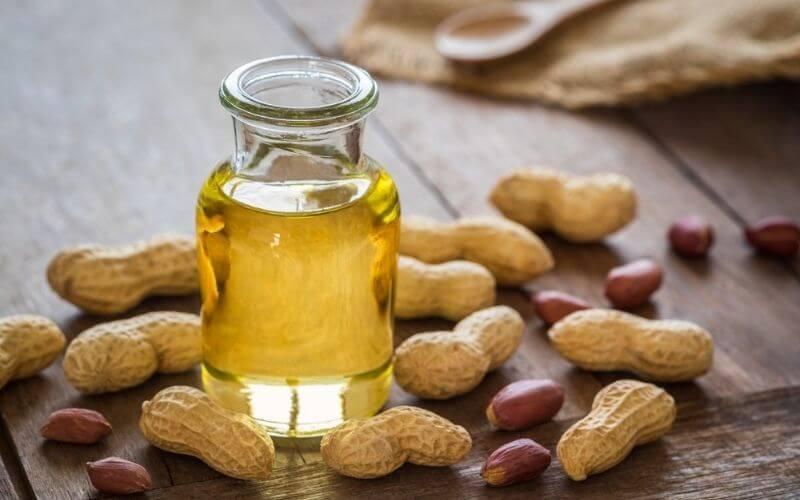
Peanut Oil vs. Canola Oil
While canola oil is a decent stand-in for peanut oil, there are a couple of key differences between the two, besides how they are sourced and extracted. We’ll look at a few of these differences here.
Smoke Point:
Peanut oil has a pretty high smoke point of 225C (437F). On the other hand, canola oil has a slightly lower smoke point of 205C (400F). Either way, both can be safely used for deep frying and sauteing.
Fat Content:
Canola oil has a very high percentage of monounsaturated fat. It is 62% monounsaturated fat, along with 31% polyunsaturated fat, and just 7% saturated fat. This makes it comparatively healthy, as far as oils go.
However, peanut oil has a higher proportion of saturated fat. In total, it has 18% saturated fats, making it a tad bit unhealthier than canola oil. It also contains 48% monounsaturated fat and 34% polyunsaturated fat.
Flavor:
Peanut oil has a roasted, deep peanut flavor that is pronounced but not very strong or overpowering. This makes it a great choice for sauteing, stir-fries, and even deep-frying, as it adds a bit of dimension to fried goodies, without altering the taste.
Peanut oil is also good for salads, and in dipping sauces and marinades, as it adds flavor to vegetables and raw ingredients.
On the other hand, canola oil has a neutral flavor so it can be used in pretty much any kind of cooking. It works best for deep frying, braising, grilling and roasting, and everyday cooking. You can even use it for baking.
Frequently Asked Questions
Below you’ll find answers to questions home cooks tend to have about peanut oil substitutes.
01. Is Peanut Oil Healthy?
Although peanut oil has a significant amount of saturated fats, it also has lots of monounsaturated fats. It is also rich in vitamins and minerals, so it is pretty healthy when consumed in moderation.
02. Is Peanut Oil Bad for Me?
Peanut oil is unhealthy when eaten frequently, as it can result in inflammation and high cholesterol levels.
03. Can I Substitute Peanut Oil for Vegetable Oil?
Yes, peanut oil is a good alternative for vegetable oil, especially as there won’t be any noticeable change in flavor for most cooking.
04. Can I Substitute Olive Oil for Peanut Oil?
Olive oil only works as a peanut oil substitute for stir-fries, shallow or pan-frying, and regular cooking. It isn’t a good idea to use olive oil for deep frying as it has a lower smoke point.
05. Can I Substitute Peanut Oil for Butter?
If a recipe calls for melted butter, you can replace it with peanut oil.
06. How Can I Make Peanut Oil from Scratch?
- Start with a couple of cups of fresh peanuts, with their shells and peels removed.
- Put the peanuts in a bowl and fill with boiled warm water and soak for 15 minutes.
- Drain water and then blend peanuts in a blender until very smooth.
- If the paste gets too stiff, add 1-2 tbsp of warm water.
- Pour the paste into a sterilized airtight container, cover it, and put it in the fridge.
- Let it sit, undisturbed for one or two days to let the oil rise to the top.
- Strain through a fine sieve a couple of times to separate the oil from the peanut paste. There should be no trace of solid peanuts in the oil. Store in a dark container and keep it in a cool and dry place.
07. Does Peanut Oil Have Taste?
Cold-pressed peanut oil has a very mild nutty flavor, while roasted peanut oil has a stronger flavor.
08. Is Peanut Oil Good for Baking?
Using a touch of peanut oil for baking will infuse your baked goods with a nutty taste. However, you shouldn’t replace softened butter with peanut oil when baking.
09. Which Peanut Oil is Best?
For deep frying, cold-pressed peanut oil is the best. But if you are looking for something to drizzle over dumplings, fritters, salads, or dipping sauces without cooking, roasted or gourmet peanut oil is a better option.
Epilogue
Peanut oil is a great cooking ingredient, especially in Asian cuisine. It has lots of vitamins and minerals, a high smoke point, and great flavor which makes it ideal for cooking. However, a lack of peanut oil shouldn’t stop you from deep frying or making fancy salad vinaigrettes.
So the next time you don’t feel like making a trip to the other side of town, just use a peanut oil substitute mentioned here. No one will know the difference!
